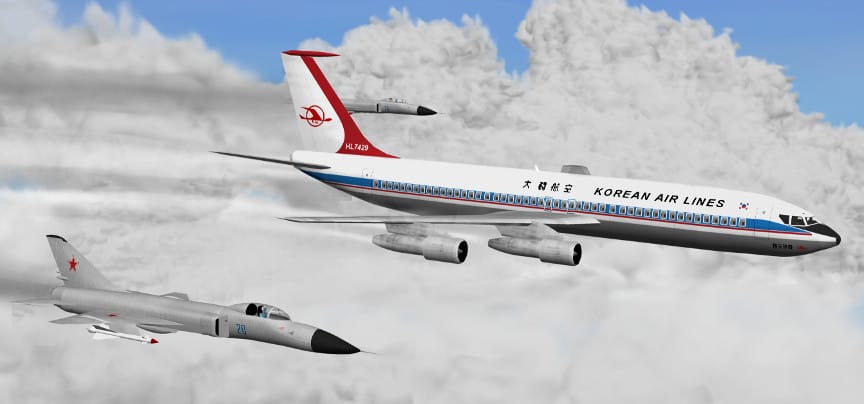Magnetic intruder: the strange story of Korean Air Lines Flight 902.
Five years before the tragedy of KAL 007, the Soviets shot down another unarmed airliner under similar circumstances.

One of the most amazing things about history is the connections you discover between events that you didn’t know existed before. Almost nothing that happens is totally new, and previous incarnations of historical events are often instructive. Most people have heard of the tragic shoot-down of Korean Air Lines Flight 007 (KAL 007) in September 1983, which killed 269 people and triggered one of the tensest episodes of the Cold War. But few people know that something very similar to that incident had happened once before. I didn't know, until I started reading more about the KAL 007 incident and uncovered the connection. The previous incident happened 46 years ago this week, on April 20, 1978, and it happened to a plane of the same airline, Korean Air Lines. Although the loss of life was far less, the strange odyssey of KAL Flight 902, and its shoot-down by Soviet air forces, resembles in many ways the tragedy that occurred above the North Pacific in 1983, and certainly raises questions about whether the latter incident could or should have been avoided.
KAL 902’s story began in Paris. The plane was a Boeing 707 and on April 20, 1978 it was headed for a very long-haul flight from Orly Airport ultimately to Seoul, South Korea, with a refueling stop in Anchorage, Alaska. A total of 109 people were on board and Captain Kim Chang Ky was at the controls. Flight 902’s trajectory was to fly almost due north from continental Europe, crossing the Arctic Ocean and the Canadian Arctic islands on its way to Alaska, and then from there to Seoul. Its flight path would have made sure it avoided the airspace of the Soviet Union, which was notoriously hostile to civilian flights from the West. In those days, in the grip of the Cold War, the Arctic north was full of surveillance planes flown by the United States and NATO, as well as a fair number of B-52 bombers armed with nuclear weapons. Surveillance planes did sometimes stray into Soviet airspace, causing the touchy Russians to scramble fighter jets to intercept them – exactly what would happen to KAL 007 in 1983.


